Gluten Free Biscuit Recipe: A Guide to Deliciously Fluffy Treats. Baking gluten-free can be a delightful challenge, especially when it comes to biscuits. These fluffy, buttery treats are often associated with the comforting flavors of home, but achieving that same texture without gluten can be tricky.
The key lies in understanding the unique properties of gluten-free flours and mastering the art of mixing and baking. This guide explores the world of gluten-free biscuits, offering insights into ingredients, techniques, and recipe variations to help you create delicious, satisfying biscuits that are both gluten-free and truly enjoyable.
From understanding the importance of selecting the right gluten-free flour blend to mastering the art of achieving a light and fluffy texture, this guide will walk you through the process of creating gluten-free biscuits that are sure to impress. We’ll explore different recipe variations, including those tailored to vegan and dairy-free diets, and provide tips for baking, serving, and enjoying these delightful treats.
Introduction to Gluten-Free Biscuits
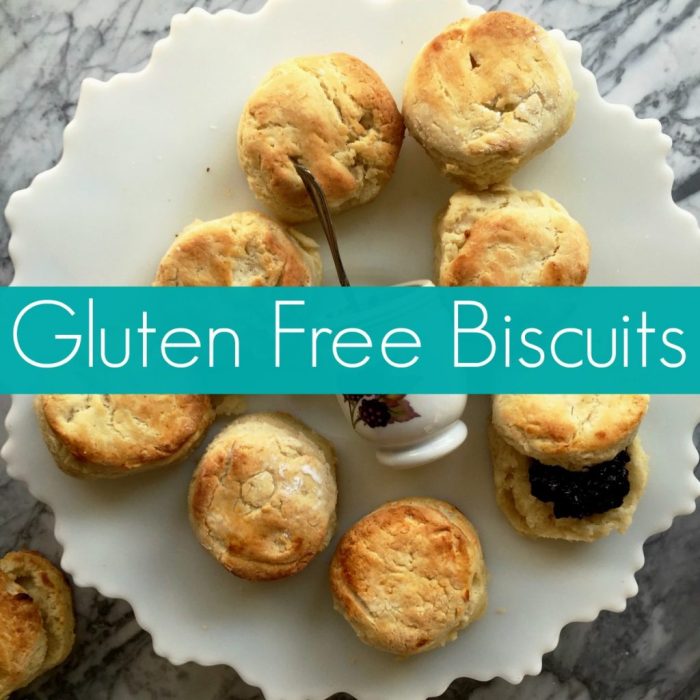
Gluten-free baking has gained popularity in recent years due to rising awareness of gluten-related disorders like celiac disease and gluten sensitivity. Many individuals choose to avoid gluten for health reasons or personal preferences. However, baking gluten-free can present unique challenges, particularly when it comes to creating recipes like biscuits, which rely heavily on gluten for their texture and structure.
Challenges of Gluten-Free Biscuit Baking
Gluten, a protein found in wheat, rye, and barley, provides elasticity and chewiness to baked goods. Without gluten, biscuits can become crumbly, dry, and lack the characteristic flakiness.
Gluten-Free Biscuit Ingredients
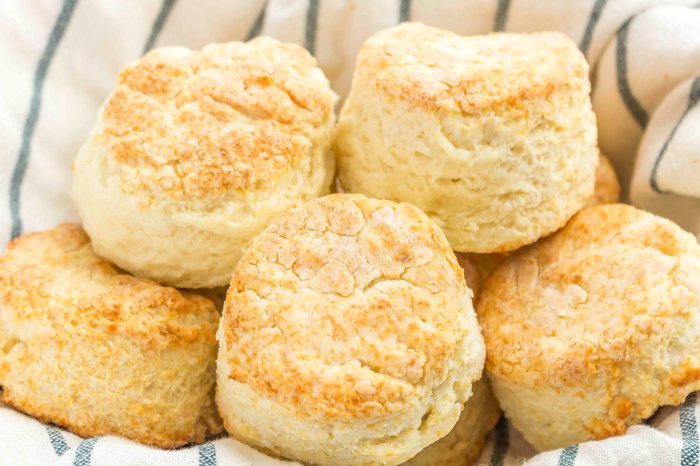
Creating delicious gluten-free biscuits requires careful ingredient selection. The right combination of flours, leavening agents, fats, and liquids will result in biscuits that are light, flaky, and flavorful.
Gluten-Free Flours
Gluten-free flours are the foundation of any gluten-free biscuit recipe. They provide structure and texture to the biscuits.
- Rice Flour:This flour has a fine texture and a neutral flavor, making it a versatile ingredient in gluten-free baking. It adds lightness and tenderness to biscuits.
- Tapioca Flour:Tapioca flour is known for its ability to create a chewy texture. It also helps to bind the other ingredients together, resulting in biscuits that hold their shape.
- Potato Starch:This starch adds a smooth and creamy texture to biscuits. It also helps to absorb excess moisture, preventing the biscuits from becoming too dense.
- Almond Flour:Almond flour adds a subtle nutty flavor and a slightly crumbly texture to biscuits. It is a good source of protein and fiber.
- Coconut Flour:Coconut flour is a highly absorbent flour that adds a subtle coconut flavor to biscuits. It is a good source of fiber and protein.
- Sorghum Flour:Sorghum flour has a slightly sweet flavor and a coarse texture. It adds a hearty and rustic quality to biscuits.
Choosing the Best Gluten-Free Flour Blend
There are numerous gluten-free flour blends available on the market. When choosing a blend, consider the following:
- Type of Biscuit:Different flour blends are suited for different types of biscuits. For example, a blend with a higher proportion of rice flour may be ideal for light and airy biscuits, while a blend with more tapioca flour may be better for chewier biscuits.
- Flavor Profile:Some flour blends have a neutral flavor, while others have a distinct flavor, such as almond or coconut. Choose a blend that complements the other flavors in your recipe.
- Nutritional Content:Some flour blends are enriched with vitamins and minerals. If you are looking for a more nutritious option, choose a blend that contains these additions.
Leavening Agents
Leavening agents are crucial for creating light and fluffy biscuits. They produce carbon dioxide gas, which causes the biscuits to rise.
- Baking Powder:Baking powder is a chemical leavening agent that reacts with moisture and heat to release carbon dioxide gas. It is commonly used in gluten-free biscuit recipes.
- Baking Soda:Baking soda is another chemical leavening agent that requires an acidic ingredient, such as buttermilk, to activate. It can be used in combination with baking powder to create a more pronounced rise.
Fats
Fats play a vital role in biscuit texture and flavor. They add richness, tenderness, and flakiness.
- Butter:Butter is a classic choice for biscuits. It provides a rich flavor and helps to create flaky layers.
- Shortening:Shortening is a solid fat that can be used in place of butter. It provides a more tender texture and a less pronounced flavor.
- Oil:Oil can be used in biscuit recipes, but it will result in a less flaky texture. It can be a good option for biscuits that are intended to be soft and moist.
Liquids
Liquids are essential for activating the leavening agents and creating a dough that can be shaped and baked.
- Milk:Milk is a common liquid used in biscuit recipes. It provides moisture and helps to develop the flavor.
- Buttermilk:Buttermilk is a fermented milk product that adds tanginess and moisture to biscuits. It also reacts with baking soda to create a more pronounced rise.
- Water:Water can be used in biscuit recipes, but it will result in a less flavorful biscuit. It is a good option if you are looking for a simple and basic recipe.
Gluten-Free Biscuit Recipe Variations
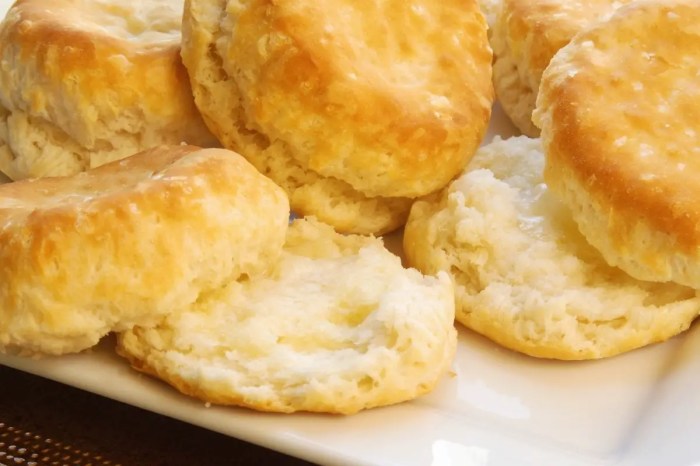
The beauty of gluten-free baking lies in its versatility. While the core ingredients may be different, there’s a wide range of variations you can explore to create delicious and satisfying gluten-free biscuits. These variations can be based on flavor, texture, and dietary needs, allowing you to tailor your biscuits to your preferences and any specific dietary restrictions.
Gluten-Free Biscuit Recipe Variations
Here’s a table comparing and contrasting different gluten-free biscuit recipes based on flavor, texture, and dietary needs:
| Recipe Name | Flavor | Texture | Dietary Needs | Link |
|---|---|---|---|---|
| Classic Gluten-Free Biscuits | Buttery, slightly sweet | Tender, flaky, slightly crumbly | Gluten-free | King Arthur Flour |
| Savory Herb Biscuits | Savory, herby | Slightly denser, flavorful | Gluten-free | The Kitchn |
| Vegan Gluten-Free Biscuits | Buttery, slightly sweet | Tender, slightly crumbly | Gluten-free, vegan | Minimalist Baker |
| Dairy-Free Gluten-Free Biscuits | Buttery, slightly sweet | Tender, slightly crumbly | Gluten-free, dairy-free | Ambitious Kitchen |
Tips for Baking Gluten-Free Biscuits
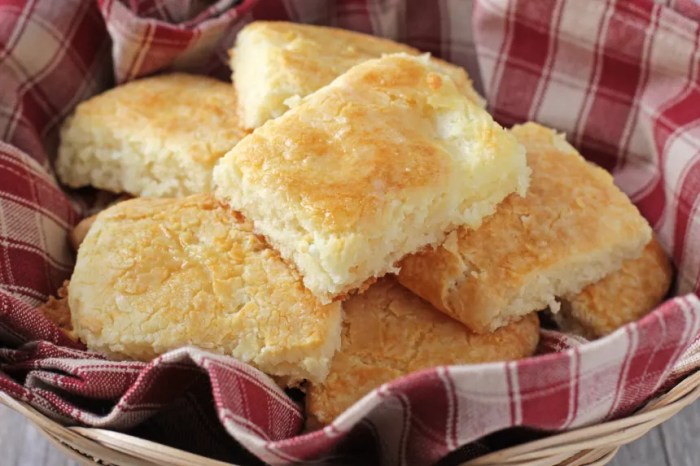
Gluten-free biscuits can be just as delicious and satisfying as their traditional counterparts. However, they require a few extra considerations to ensure a light and fluffy texture.
Proper Mixing and Handling, Gluten free biscuit recipe
Overmixing gluten-free dough can lead to tough biscuits. Gluten-free flours are more delicate than wheat flour and don’t develop gluten in the same way. It’s important to mix the ingredients just until they come together. Overworking the dough will result in a dense and chewy texture.
Baking Time and Temperature
Gluten-free biscuits tend to bake faster than traditional biscuits. This is because gluten-free flours have less moisture and protein, which means they dry out more quickly. Therefore, it’s important to monitor the biscuits closely and remove them from the oven as soon as they are golden brown.
Baking time can vary depending on the size and thickness of the biscuits, the oven, and the type of gluten-free flour used. It’s always best to check for doneness by inserting a toothpick into the center of a biscuit.
Understand how the union of chicken and gravy recipes can improve efficiency and productivity.
If it comes out clean, the biscuits are done.
Serving and Enjoying Gluten-Free Biscuits: Gluten Free Biscuit Recipe
Gluten-free biscuits are incredibly versatile, making them a delightful addition to various meals and snacks. Their fluffy texture and slightly sweet flavor pair beautifully with both savory and sweet toppings.
Serving Gluten-Free Biscuits
These biscuits can be enjoyed in various ways, depending on your preference. Here are a few suggestions:
- Serve warm with butter and jam:This classic pairing is always a crowd-pleaser, offering a comforting and familiar taste.
- Pair with savory toppings:For a more substantial meal, try serving your gluten-free biscuits with savory toppings like honey butter, cheese, or smoked salmon.
- Use as a base for sandwiches:Gluten-free biscuits make excellent sandwich bases, offering a unique twist on traditional bread. Fill them with your favorite ingredients, such as turkey, ham, or cheese, for a delicious and satisfying lunch or dinner.
- Accompany soups and stews:These biscuits are perfect for soaking up flavorful broth, adding a satisfying element to your soup or stew.
- Enjoy as a snack:Gluten-free biscuits are a great option for a quick and easy snack. Enjoy them on their own or with a side of your favorite dip or spread.
Creative Pairings
Here are some creative pairing ideas to elevate your gluten-free biscuit experience:
- Savory:
- Spicy Honey Butter:Combine honey, butter, and your favorite hot sauce for a sweet and spicy topping.
- Avocado and Everything Bagel Seasoning:Spread mashed avocado on a biscuit and sprinkle with everything bagel seasoning for a savory and flavorful treat.
- Smoked Salmon and Cream Cheese:Top your biscuit with a dollop of cream cheese and slices of smoked salmon for an elegant and satisfying appetizer.
- Sweet:
- Strawberry and Balsamic Glaze:Combine fresh strawberries, balsamic vinegar, and sugar to create a tangy and sweet glaze for your biscuits.
- Chocolate Ganache:Melt dark chocolate and heavy cream to create a rich and decadent ganache for a luxurious dessert.
- Lemon Curd and Whipped Cream:Spread lemon curd on a warm biscuit and top with whipped cream for a refreshing and tangy treat.
Incorporating Gluten-Free Biscuits into Meals and Snacks
Here are some ideas for incorporating gluten-free biscuits into your meals and snacks:
- Breakfast:Serve your biscuits with scrambled eggs, bacon, or sausage for a hearty breakfast.
- Lunch:Use them as sandwich bases or pair them with a salad for a light and flavorful lunch.
- Dinner:Serve your biscuits alongside soups, stews, or chili for a comforting and satisfying dinner.
- Snacks:Enjoy them on their own or with a dip, spread, or cheese for a quick and easy snack.
Closing Notes
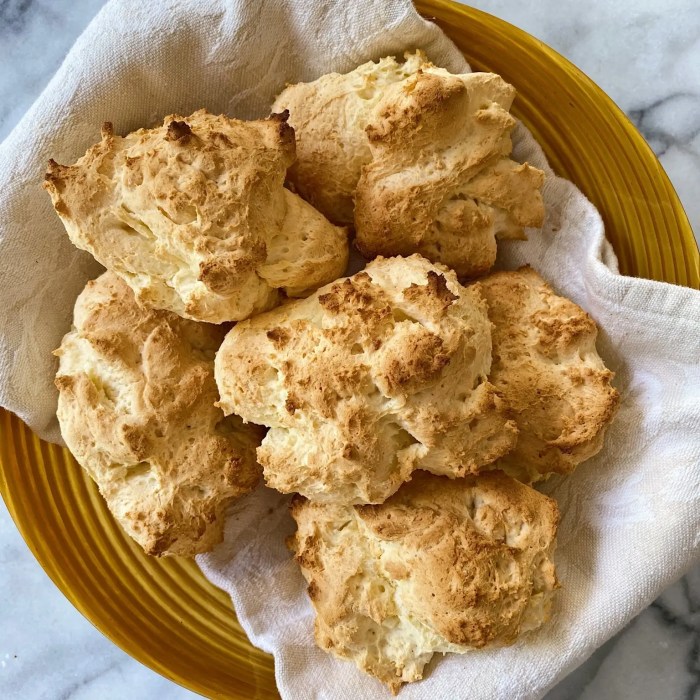
With a little experimentation and a touch of culinary creativity, you can master the art of gluten-free biscuit baking. Whether you’re looking for a delicious accompaniment to a hearty meal or a sweet treat to enjoy with your morning coffee, these gluten-free biscuits are sure to satisfy.
So, gather your ingredients, put on your apron, and embark on a journey to create delectable, gluten-free biscuits that will delight your taste buds and warm your heart.
